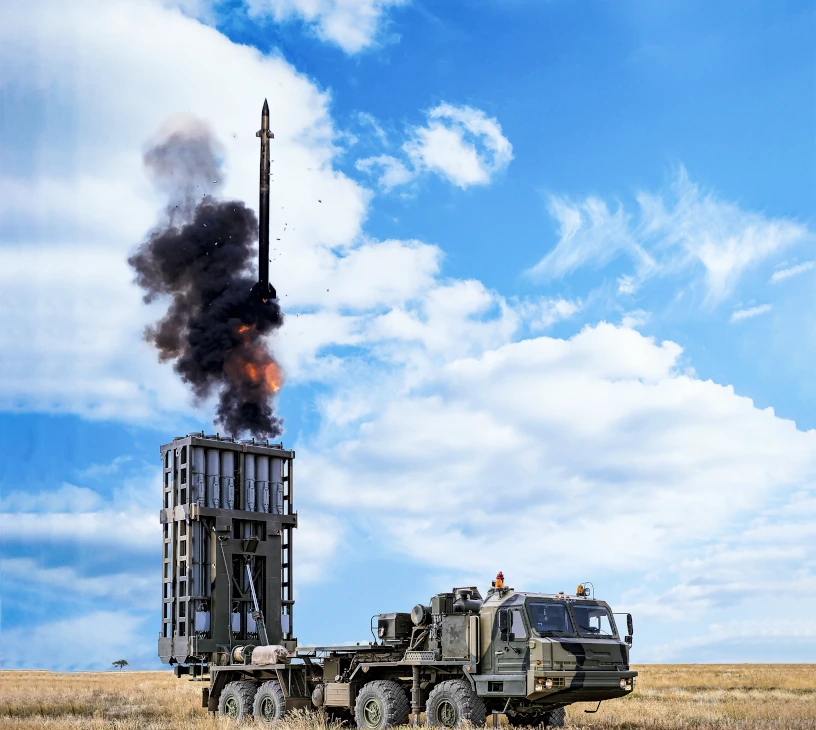According to a source cited by RIA Novosti, the S-350 Vityaz accomplished its mission by destroying multiple Ukrainian Armed Forces (AFU) combat aircraft and unmanned aerial vehicles (UAVs).
The S-350 anti-aircraft missile complex in the Special Operations zone detected, tracked, and destroyed Ukrainian air targets fully automatically, without an operator’s participation, for the first time in combat conditions.
According to him, the mission of the combat crew was to supervise the air defence system’s operation. He added that the targets were defeated without the intervention of the operator. The source explained that the system independently chose the algorithm for battle zone actions.
The automatic mode is employed based on the principle that an operator does not override the decisions of the artificial intelligence elements of the complex within the context of an emerging air combat situation. This means that the operator did not interfere with the operation of the complex, thereby validating the operation algorithm that was selected by the system.
According to the interlocutor, Vityaz operated in active and passive radar modes. This procedure improves the complex’s noise immunity and its ability to detect and classify targets.
This news comes after Russia destroyed the Patriot system while protecting Kyiv, earning it a disgraceful record in the battle. Ukraine’s S-300 systems from the Soviet era have a better track record in combat than Patriot System. Patriot’s history isn’t great because it’s failed before.
In regions adjacent to the zone of the Russian special operation, the number of units equipped with the S-400, S-300PM2 and S-350 air defence systems has doubled, while the number of units equipped with the Pantsir-S systems has increased by more than five times, according to Lieutenant General Andrey Demin, commander of the air defence-missile defence forces and deputy commander-in-chief of the Russian Aerospace Forces. Ria Novosti quoted him on April 10.
In the air watch zones, the multifunctional systems destroy air targets detected by aircraft and A-50U AEW&CS and hostile radar stations and anti-aircraft missile systems using anti-radar missiles.

S-350 Vityaz solves a lot of problems
Almaz-Antey developed the S-350 Vityaz mobile multi-channel anti-aircraft missile system for the anti-aircraft missile forces of the Russian Aerospace Forces. It is designed to safeguard state, administrative, industrial, and military facilities and groups of troops from modern and sophisticated air attack weapons.
The Vityaz system comprises an autonomous launcher, an all-aspect radar with electronic space surveillance, and a command post. All air defence elements are mounted on a special BAZ-69092-012 wheeled chassis. This air defence system is equipped with medium- and short-range 9M96 and 9M100 missiles. They are launched according to the principle of a “cold” vertical launch – the launch container propels them to a height of more than 30 metres, and then the main engine is ignited after a gas-dynamic turn towards the target.
The zone of destruction for aerodynamic targets is between 1.5 and 60 kilometres in range and 10 to 30 kilometres in altitude, while for ballistic targets, it is between 1.5 and 30 kilometres in range and 2 to 25 kilometres in altitude. Vityaz missiles can strike targets with a top speed of two kilometres per second.
The complex can engage aerodynamic air targets, such as aircraft, drones, cruise missiles, and other means, at a maximum range of 120 to 150 kilometres, according to various publicly available sources, and ballistic targets at a maximum range of 25 kilometres.
The S-350 Vityaz is an intermediate surface-to-air missile system that debuted at the 2013 MAKS air show. Russian forces assert they took delivery of the system in 2019. The S-350 system’s interceptor 9M96 missile is capable of engaging air and ballistic threats at ranges between 1.5 and 120 kilometres and altitudes between 10 and 30,000 metres.
Russia’s latest Vitaz missile system is more accurate and less expensive than the United States Patriot missiles.
The Patriot cannot shoot down targets flying at altitudes up to 100 metres, whereas the Vitaz destroys targets at 10 metres and above. This provides context for the enhanced significance of its deployment in Moscow.
The S-350 occupies a position between the S-300 and S-400, bridging the distance between medium and long-range air defence systems. The Vityaz system is more functional than the long-range systems S-300V4, S-400, and S-500, designed to destroy strategic and tactical aircraft from a vast distance. The S-350 is a more adaptable system capable of destroying aircraft, cruise missiles, and UAVs in the middle and near zone across the entire altitude spectrum. This complex accomplishes various duties, including those assigned to the S-400, despite interception and detection range restrictions.
In mobile launch containers, it contains more anti-aircraft-guided missiles than similar Russian systems. Additionally, this system can fire from both launchers and combat vehicles.
The “Vityaz” boasts improved accuracy and speed when firing. The radars and command vehicle are advanced enough to fire two missiles at each of the sixteen targets at the same time.
The S-350 “Vityaz” is also capable of operating in automatic mode, in which the computer selects the method of target engagement. This feature has been thoroughly tested in actual combat.
S-400, S-350″ Vityaz,” S-500, and other air defence systems, such as the Pantsir-S air defence missile system, can function as a single system controlled by an automated control system – a computer with artificial intelligence, where human participation is limited to the management of hostilities.
